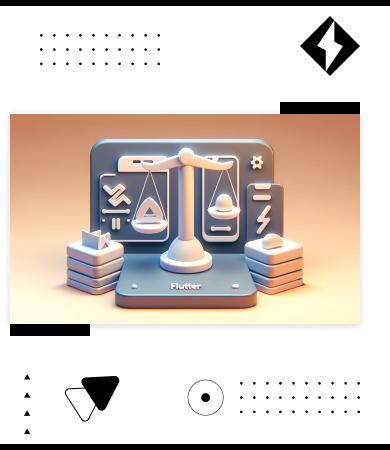Support center +91 97257 89197
Web Development SecurityJanuary 30, 2024
Web Development Security: Latest Trends and Best Practices

Introduction
The digital landscape is evolving rapidly, and with it, the importance of security in web development has escalated. In the early days of the internet, security was often an afterthought. Today, it's a cornerstone of web development. As technologies advance, so do the tactics of cybercriminals, making it imperative for developers and businesses to stay ahead in the security game. This blog delves into the latest trends and best practices in web development security, ensuring your digital assets are well-protected against emerging threats.
Current Trends in Web Development Security
The realm of web security is witnessing several groundbreaking trends:
-
AI and Machine Learning in Security: The integration of artificial intelligence (AI) and machine learning (ML) in cybersecurity tools has been a game-changer. These technologies enable predictive analytics, helping in identifying potential threats before they become actual breaches.
-
Data Privacy Regulations: With regulations like GDPR and CCPA, there's an increased emphasis on data privacy. Web developers now need to be more mindful of how they collect, store, and process user data.
-
Decentralized Security Systems: The shift towards decentralized systems, partly fueled by blockchain technology, is redefining how data security is handled, offering a more robust defense against centralized attacks.
Best Practices for Web Development Security
Adhering to best practices is crucial for maintaining robust security in web development:
-
Regular Updates and Patch Management: Keeping software updated is essential. Regular patches and updates close security loopholes that hackers might exploit.
-
Secure Coding Practices: Implementing secure coding guidelines helps prevent vulnerabilities. Techniques include input validation, output encoding, and error handling.
-
Using HTTPS and SSL/TLS: Implementing HTTPS with SSL/TLS encryption is fundamental for securing data in transit, protecting it from being intercepted.
-
Database Security Measures: Employing encryption, regular backups, and access controls ensures database security.
-
User Authentication and Authorization Best Practices: Implementing multi-factor authentication and least privilege access control enhances user security.
Common Security Threats and Mitigations
Several threats consistently challenge web security:
-
Cross-Site Scripting (XSS): XSS attacks inject malicious scripts into otherwise benign and trusted websites. Mitigation involves implementing content security policies and validating user input.
-
SQL Injection: It occurs when attackers manipulate a site's database through unvalidated input vulnerabilities. Prepared statements and stored procedures can help prevent these attacks.
-
CSRF (Cross-Site Request Forgery): CSRF tricks a user into executing unwanted actions on a web application. Mitigation strategies include using anti-CSRF tokens and same-site cookies.
Emerging Technologies in Web Security
Innovations like blockchain and quantum computing are set to redefine web security:
-
Blockchain: Offers enhanced security features like transparency, immutability, and decentralized control, making it harder for unauthorized changes or hacks to occur.
-
Quantum Computing: While it presents new security tools, it also poses threats, as traditional encryption could become vulnerable to quantum computing power.
-
Internet of Things (IoT) Security: As IoT devices proliferate, securing these devices becomes critical. This involves ensuring secure communications and protecting against IoT-specific attacks.
-
Cloud Security: With the shift towards cloud computing, cloud security is paramount. This includes secure data storage, encryption, and identity management.
-
Zero Trust Security Models: This security concept operates on the principle that no user or device inside or outside the network is trusted by default. Implementing this requires strict identity verification.
Integrating Security into the Web Development Lifecycle
Security should be an integral part of the web development lifecycle, not an afterthought. This involves:
-
Security Planning in the Initial Stages: Addressing security at the start of a project can significantly reduce vulnerabilities.
-
Ongoing Security Testing: Regular security testing, including penetration testing and vulnerability assessments, is crucial.
-
Continuous Monitoring and Updating: Continuous monitoring for new threats and regular updates are necessary to maintain security integrity.
Training and Awareness
Developers and users need to be aware of security best practices:
-
Regular Training for Developers: Keeping the development team updated with the latest security trends and practices.
-
User Education: Educating users on safe web practices, like recognizing phishing attempts and securing personal data.
Regulatory Compliance and Ethical Considerations
Adhering to regulatory standards and ethical considerations is essential:
-
Compliance with Data Protection Laws: Understanding and complying with laws like GDPR, HIPAA, etc., is crucial for legal and ethical reasons.
-
Ethical Hacking and Penetration Testing: Using ethical hacking to identify and fix vulnerabilities before malicious actors exploit them.
Conclusion
In this digital era, web development security is not just a technical issue; it's a business imperative. By embracing the latest trends, best practices, and integrating security throughout the development lifecycle, organizations can significantly enhance their cybersecurity posture. As technologies evolve, so will the landscape of web development security, making continuous learning and adaptation key to staying secure.
TLDR
This blog explores the latest trends and best practices in web development security, covering topics like AI in security, data privacy, secure coding practices, and emerging technologies like blockchain and quantum computing.
FAQs
The latest trends include AI and ML in security, a focus on data privacy laws, and decentralized security systems.
Regular updates and patch management are essential to fix vulnerabilities and protect against new threats.
Blockchain offers enhanced security through decentralized data, while quantum computing presents both new security tools and threats.
Work with us







